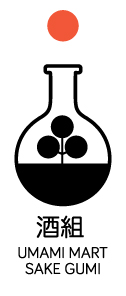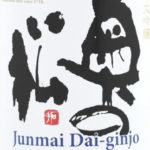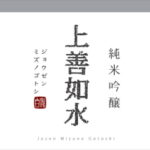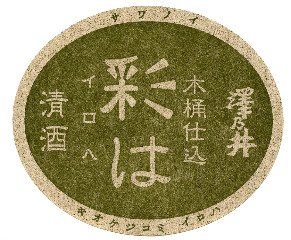 July sakes ship today for Sake Gumi, our monthly sake subscription club. If you like what's on deck here, you should join!
July sakes ship today for Sake Gumi, our monthly sake subscription club. If you like what's on deck here, you should join!
This month we celebrated the 240th year of the U.S. of A. To commemorate this event, I thought of how I value individuality – in people and in sake. So for this month, I chose sakes that represent several disparate points on the sake spectrum.
When I started enjoying sake as a salary(wo)man in Tokyo, I thought all sakes tasted the same. But I quickly learned that sake can be as varied as the mood of a teenage girl. They can be sweet, bright, direct, wise beyond their years, dry as a bone, complicated, mysterious, driven, etc. (yes, I was once a teenager). Whatever the mood, there is a time and a place for each characteristic.
Another facet we must acknowledge when celebrating individuality is freedom. One cannot exist without the other. With a history of at least 2000 years, sake is currently in a state of ultimate freedom, unchained from restraint and inhibitions. Although there are rules to abide by (for example, sake must be brewed with rice, koji, yeast, and water) we can declare with confidence that we are in an era of sake that has never been freer. From the traditional kimoto style (represented this month by the Kioke-Jikomi Iroha) to the most modern style of sake, sparkling (represented by the Okunomatsu Daiginjo Sparkling), the range of tastes and styles of sakes that exist today would blow the mind of sake makers nearly two millenia ago. America exists today, in the same vein, as exhibited by our current political climate.
When we are presented with variety and freedom, the ultimate reward is choice. Although it can be overwhelming, having choices to make decisions is how America thrives. So even if you prefer one sake over another this month, I hope that you appreciate all of them for their different qualities and living histories.
Clear eyes, full hearts, can’t lose!
Yoko
LEVEL 1: Introductory Membership (Two 300ml bottles)
 Akane 10.5
Akane 10.5
Sawanotsuru Co., Ltd (Kobe, Japan)
Seimaibuai: 75%
SMV: -45
The namesake here refers to the fact that this sake is made from red rice (
aka means red) and the fact that it’s a low alcohol sake at 10.5% ABV. Sip this sake in the same spirit as you would a rosé – chilled while wearing white pants. With a nose full of sweet lees, raisins, and tartness, this sake pairs perfectly with savory fermented foods, specifically a 1:1 red miso and Kewpie mayonnaise dip with broccolini, or if you are Die Hard®, enjoy with natto.
 Okunomatsu Junmai Daiginjo Sparkling
Okunomatsu Junmai Daiginjo Sparkling
Okunomatsu Sake Brewery (Fukushima, Japan)
Seimaibuai: 50%
SMV: -25
One of the reasons that Kayoko and I really both love this sake is because of its unpredictability. Reading between the lines, a daiginjo means flowery and sparkling means sweet froufrou, but this sake is actually neither. Instead, it proves upon a chilled first sip that this is a rice-forward, perceivably dry brew. If any of you follow our Instagram feed, you know about my obsession with shisomaki (a paste made of miso, walnuts, sugar, and sesame seeds wrapped in a shiso leaf). This sake is a dreamboat with shisomaki. A lesson in America and in sake: don’t judge a book by its cover.
LEVEL 2: Premium Membership (Two 720ml bottles)
 Jozen Junmai Ginjo White
Jozen Junmai Ginjo White
Shirataki Shuzo (Niigata, Japan)
Seimaibuai: 60%
SMV: +5
This junmai ginjo has all the qualities I aspire to achieve as a person: clear, breezy, slightly sweet, but with a dry finish. It highlights the sweet succulence of Niigata rice but exists in the realm of dry sakes, making it a great accompaniment to fresh vegetables. My “Eureka!” moment? Pairing this sake with sweet, raw cherry tomatoes. Fresh, crisp carrots are also good candidates. Try chilled and taste its sweetness unfold as it comes up to room temperature.
 Kioke-Jikomi Iroha Kimoto Junmai
Kioke-Jikomi Iroha Kimoto Junmai
Sawanoi Sake Brewery (Tokyo, Japan)
Seimaibuai: 65%
SMV: -1
In contrast to the Jozen above, the Kioke-Jikomi Iroha is nutty, brash, layered, musty, unapologetic, rummy, spicy, and viscous (just like the people who live in Tokyo, where this sake is brewed). Uncover the inherent smoothness of this sake by heating it up in a carafe to the
joukan level (around 110°F). A simple plate of sliced avocado with soy sauce and yuzu kosho is my favorite pairing with this sake. If you want to step it up, try this sake with cashews, brie, or prosciutto. Notice its amber color from being aged in cedar casks. Next level (2) lesson in America and in sake: being real and raw is better than being refined and polite.
 July sakes ship today for Sake Gumi, our monthly sake subscription club. If you like what's on deck here, you should join!
This month we celebrated the 240th year of the U.S. of A. To commemorate this event, I thought of how I value individuality – in people and in sake. So for this month, I chose sakes that represent several disparate points on the sake spectrum.
When I started enjoying sake as a salary(wo)man in Tokyo, I thought all sakes tasted the same. But I quickly learned that sake can be as varied as the mood of a teenage girl. They can be sweet, bright, direct, wise beyond their years, dry as a bone, complicated, mysterious, driven, etc. (yes, I was once a teenager). Whatever the mood, there is a time and a place for each characteristic.
Another facet we must acknowledge when celebrating individuality is freedom. One cannot exist without the other. With a history of at least 2000 years, sake is currently in a state of ultimate freedom, unchained from restraint and inhibitions. Although there are rules to abide by (for example, sake must be brewed with rice, koji, yeast, and water) we can declare with confidence that we are in an era of sake that has never been freer. From the traditional kimoto style (represented this month by the Kioke-Jikomi Iroha) to the most modern style of sake, sparkling (represented by the Okunomatsu Daiginjo Sparkling), the range of tastes and styles of sakes that exist today would blow the mind of sake makers nearly two millenia ago. America exists today, in the same vein, as exhibited by our current political climate.
When we are presented with variety and freedom, the ultimate reward is choice. Although it can be overwhelming, having choices to make decisions is how America thrives. So even if you prefer one sake over another this month, I hope that you appreciate all of them for their different qualities and living histories.
Clear eyes, full hearts, can’t lose!
Yoko
LEVEL 1: Introductory Membership (Two 300ml bottles)
July sakes ship today for Sake Gumi, our monthly sake subscription club. If you like what's on deck here, you should join!
This month we celebrated the 240th year of the U.S. of A. To commemorate this event, I thought of how I value individuality – in people and in sake. So for this month, I chose sakes that represent several disparate points on the sake spectrum.
When I started enjoying sake as a salary(wo)man in Tokyo, I thought all sakes tasted the same. But I quickly learned that sake can be as varied as the mood of a teenage girl. They can be sweet, bright, direct, wise beyond their years, dry as a bone, complicated, mysterious, driven, etc. (yes, I was once a teenager). Whatever the mood, there is a time and a place for each characteristic.
Another facet we must acknowledge when celebrating individuality is freedom. One cannot exist without the other. With a history of at least 2000 years, sake is currently in a state of ultimate freedom, unchained from restraint and inhibitions. Although there are rules to abide by (for example, sake must be brewed with rice, koji, yeast, and water) we can declare with confidence that we are in an era of sake that has never been freer. From the traditional kimoto style (represented this month by the Kioke-Jikomi Iroha) to the most modern style of sake, sparkling (represented by the Okunomatsu Daiginjo Sparkling), the range of tastes and styles of sakes that exist today would blow the mind of sake makers nearly two millenia ago. America exists today, in the same vein, as exhibited by our current political climate.
When we are presented with variety and freedom, the ultimate reward is choice. Although it can be overwhelming, having choices to make decisions is how America thrives. So even if you prefer one sake over another this month, I hope that you appreciate all of them for their different qualities and living histories.
Clear eyes, full hearts, can’t lose!
Yoko
LEVEL 1: Introductory Membership (Two 300ml bottles)
 Akane 10.5
Sawanotsuru Co., Ltd (Kobe, Japan)
Seimaibuai: 75%
SMV: -45
The namesake here refers to the fact that this sake is made from red rice (aka means red) and the fact that it’s a low alcohol sake at 10.5% ABV. Sip this sake in the same spirit as you would a rosé – chilled while wearing white pants. With a nose full of sweet lees, raisins, and tartness, this sake pairs perfectly with savory fermented foods, specifically a 1:1 red miso and Kewpie mayonnaise dip with broccolini, or if you are Die Hard®, enjoy with natto.
Akane 10.5
Sawanotsuru Co., Ltd (Kobe, Japan)
Seimaibuai: 75%
SMV: -45
The namesake here refers to the fact that this sake is made from red rice (aka means red) and the fact that it’s a low alcohol sake at 10.5% ABV. Sip this sake in the same spirit as you would a rosé – chilled while wearing white pants. With a nose full of sweet lees, raisins, and tartness, this sake pairs perfectly with savory fermented foods, specifically a 1:1 red miso and Kewpie mayonnaise dip with broccolini, or if you are Die Hard®, enjoy with natto.
 Okunomatsu Junmai Daiginjo Sparkling
Okunomatsu Sake Brewery (Fukushima, Japan)
Seimaibuai: 50%
SMV: -25
One of the reasons that Kayoko and I really both love this sake is because of its unpredictability. Reading between the lines, a daiginjo means flowery and sparkling means sweet froufrou, but this sake is actually neither. Instead, it proves upon a chilled first sip that this is a rice-forward, perceivably dry brew. If any of you follow our Instagram feed, you know about my obsession with shisomaki (a paste made of miso, walnuts, sugar, and sesame seeds wrapped in a shiso leaf). This sake is a dreamboat with shisomaki. A lesson in America and in sake: don’t judge a book by its cover.
LEVEL 2: Premium Membership (Two 720ml bottles)
Okunomatsu Junmai Daiginjo Sparkling
Okunomatsu Sake Brewery (Fukushima, Japan)
Seimaibuai: 50%
SMV: -25
One of the reasons that Kayoko and I really both love this sake is because of its unpredictability. Reading between the lines, a daiginjo means flowery and sparkling means sweet froufrou, but this sake is actually neither. Instead, it proves upon a chilled first sip that this is a rice-forward, perceivably dry brew. If any of you follow our Instagram feed, you know about my obsession with shisomaki (a paste made of miso, walnuts, sugar, and sesame seeds wrapped in a shiso leaf). This sake is a dreamboat with shisomaki. A lesson in America and in sake: don’t judge a book by its cover.
LEVEL 2: Premium Membership (Two 720ml bottles)
 Jozen Junmai Ginjo White
Shirataki Shuzo (Niigata, Japan)
Seimaibuai: 60%
SMV: +5
This junmai ginjo has all the qualities I aspire to achieve as a person: clear, breezy, slightly sweet, but with a dry finish. It highlights the sweet succulence of Niigata rice but exists in the realm of dry sakes, making it a great accompaniment to fresh vegetables. My “Eureka!” moment? Pairing this sake with sweet, raw cherry tomatoes. Fresh, crisp carrots are also good candidates. Try chilled and taste its sweetness unfold as it comes up to room temperature.
Jozen Junmai Ginjo White
Shirataki Shuzo (Niigata, Japan)
Seimaibuai: 60%
SMV: +5
This junmai ginjo has all the qualities I aspire to achieve as a person: clear, breezy, slightly sweet, but with a dry finish. It highlights the sweet succulence of Niigata rice but exists in the realm of dry sakes, making it a great accompaniment to fresh vegetables. My “Eureka!” moment? Pairing this sake with sweet, raw cherry tomatoes. Fresh, crisp carrots are also good candidates. Try chilled and taste its sweetness unfold as it comes up to room temperature.
 Kioke-Jikomi Iroha Kimoto Junmai
Sawanoi Sake Brewery (Tokyo, Japan)
Seimaibuai: 65%
SMV: -1
In contrast to the Jozen above, the Kioke-Jikomi Iroha is nutty, brash, layered, musty, unapologetic, rummy, spicy, and viscous (just like the people who live in Tokyo, where this sake is brewed). Uncover the inherent smoothness of this sake by heating it up in a carafe to the joukan level (around 110°F). A simple plate of sliced avocado with soy sauce and yuzu kosho is my favorite pairing with this sake. If you want to step it up, try this sake with cashews, brie, or prosciutto. Notice its amber color from being aged in cedar casks. Next level (2) lesson in America and in sake: being real and raw is better than being refined and polite.
Kioke-Jikomi Iroha Kimoto Junmai
Sawanoi Sake Brewery (Tokyo, Japan)
Seimaibuai: 65%
SMV: -1
In contrast to the Jozen above, the Kioke-Jikomi Iroha is nutty, brash, layered, musty, unapologetic, rummy, spicy, and viscous (just like the people who live in Tokyo, where this sake is brewed). Uncover the inherent smoothness of this sake by heating it up in a carafe to the joukan level (around 110°F). A simple plate of sliced avocado with soy sauce and yuzu kosho is my favorite pairing with this sake. If you want to step it up, try this sake with cashews, brie, or prosciutto. Notice its amber color from being aged in cedar casks. Next level (2) lesson in America and in sake: being real and raw is better than being refined and polite.




Comments (0)
There are no comments for this article. Be the first one to leave a message!